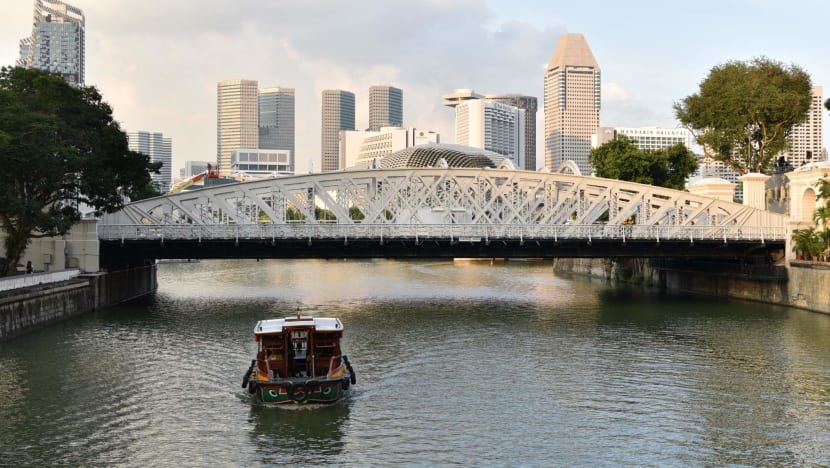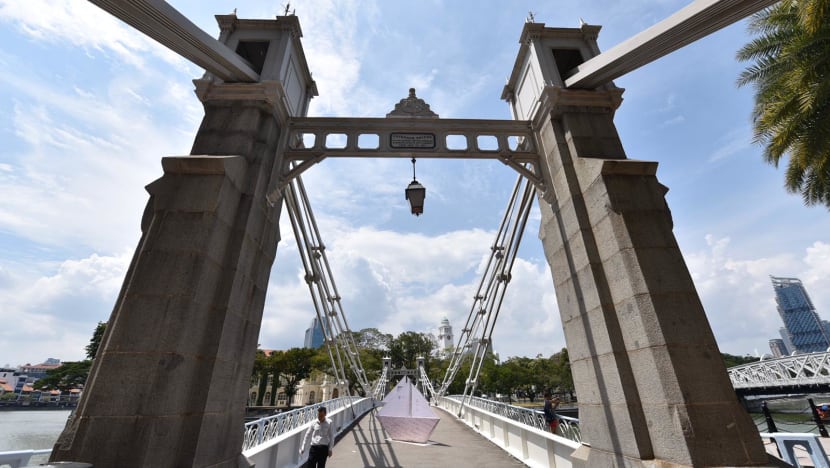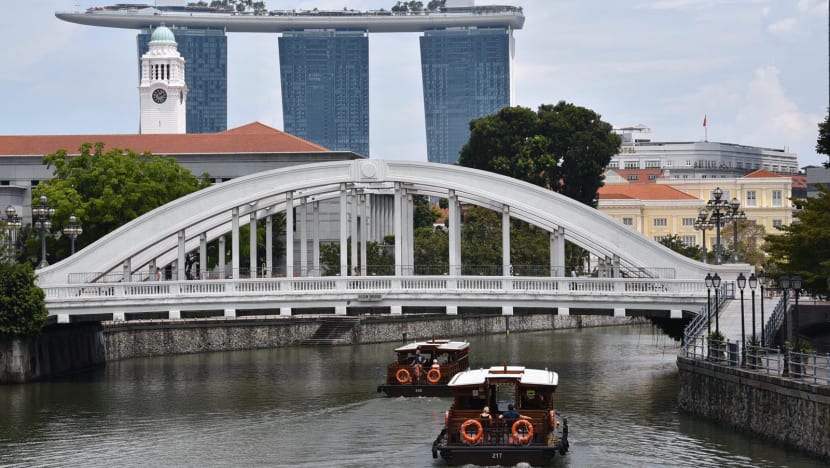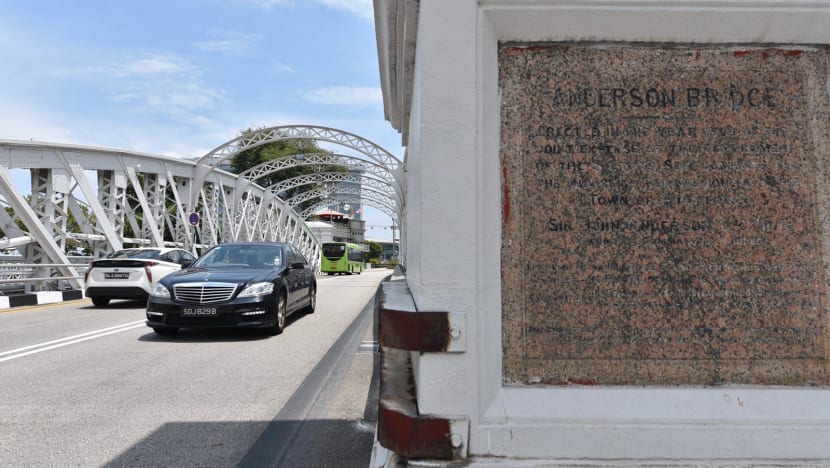5 things to know about the newly gazetted Singapore River bridges

The evening sun casts a dim orange glow onto Anderson Bridge before it is gazetted along with Cavenagh and Elgin Bridges (Photo: Jeremy Long)
SINGAPORE: The Cavenagh, Anderson and Elgin Bridges have stood at the Singapore River's historic mouth for decades, facilitating easy access between the waterway's north and south banks.
On Tuesday (Oct 15), they were collectively gazetted as Singapore's 73rd national monument, giving them the same status as other landmarks such as the Istana and Raffles Hotel.
READ: Another S$15 million set aside for restoration of national monuments
More than just an easy way to get to Boat Quay or an aesthetically pleasing cameo in the Singapore Grand Prix, the bridges also illustrate Singapore's growth as a trading port and flourishing city.
Here are some facts about Singapore's newest official national monuments:
THEY'RE PRETTY OLD
Opened in 1869, 1910 and 1929, respectively, the Cavenagh, Anderson and Elgin Bridges date back to Singapore's colonisation by the British.
Of the three, Cavenagh Bridge stands out as it is the oldest surviving bridge across the Singapore River.
It is also one of only two remaining bridges in the world built with the "Ordish-Lefeuvre system", a type of modified cable-stayed bridge design (the other is the Albert Bridge in London).

However, the present Elgin Bridge has an equivalent claim to fame - it stands at the site of the first footbridge to be built in Singapore (around the 1820s, and so earlier than the Cavenagh Bridge). It is the fifth bridge and second "Elgin Bridge" to be built on the site.
MADE IN BRITAIN
The structural components of the three bridges were manufactured in Britain and then shipped to Singapore.
The engineers involved were also British, as were the bridges' namesakes.
Cavenagh Bridge was named after Sir William Orfeur Cavenagh, the governor of the Straits Settlements at the time.
Anderson Bridge was named after Sir John Anderson, Governor of the Straits Settlements and High Commissioner of the Federated Malay States, while Elgin Bridge was named after Lord James Bruce Elgin, Governor General of India from 1862 to 1863.

NO CATTLE AND HORSES, PLEASE
Following the opening of Anderson Bridge, heavy traffic was diverted away from its older sibling, which was converted into a pedestrian-only bridge.
Keen-eyed members of the public crossing Cavenagh Bridge will be able to spot antique signs at the end of the bridge prohibiting "any vehicle of which the laden weight exceeds 3 cwt and to all cattle and horses".
Something to bear in mind next time you cross.
TRIBUTES TO ENGINEERS ... AND LIONS
Apart from bans on cattle and horses, the bridges also feature tributes to their engineers.
Cavenagh Bridge has steel plates emblazoned with its engineers' names.
Meanwhile, Elgin Bridge has bronze plaques engraved with lion symbols.
Lions didn't quite make it for the Anderson Bridge - its original design featured a pair of bronze lions, but these were eventually left out for reason of economy, according to the National Library Board.
However, the bridge does have a plaque made of red granite imported from Aswan, Egypt.

BUILT BY CONVICTS
Amid its status as the oldest bridge across the Singapore River, Cavenagh Bridge also has a more sombre past.
It was built by convicts from India, with the NLB describing it as the "last major project undertaken by Indian convict labour".
According to the board, Singapore began receiving Indian convicts from British India from 1825 to serve out their sentences, to assist with a labour shortage and development requirements.
Cavenagh Bridge was one of the monuments, bridges and other infrastructure built by convict labour in Singapore.














